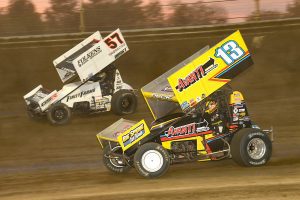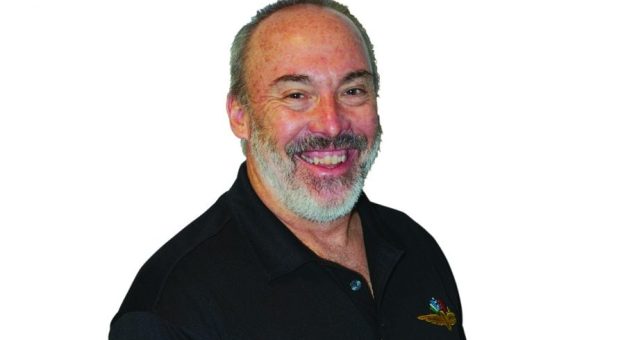INDIANAPOLIS — F. Scott Fitzgerald is reputed to have said the test of first-rate intelligence is the ability to keep two completely opposite thoughts in your head at the same time. I have no idea if what follows fits into this category, or (a.) if it is just taking a different perspective, or (b.) simply talking out of both sides of my mouth.
I feel confident I can do both.
A few columns ago I heaped praise on the new rules of Major League Baseball that had drastically reduced the time of the average game. Not surprisingly, I found lessons for auto racing. Then this happened …
I take a minor league baseball trip every summer with my daughter. It is important to both of us and as one can imagine it is less about the actual game. This year our trip took place around the Fourth of July. There is a great deal of planning and anticipation and this year we focused on games in the Quad Cities and Cedar Rapids. A pattern was quickly established.

At the Cedar Rapids game, it seemed like we had barely finished our popcorn and it was time for the seventh-inning stretch. In what truly seemed like a blink of an eye, the game was over. My daughter looked at me and said, “I feel cheated.” I got it. There was the build-up and excitement and suddenly it was over.
This came back into focus for me at two different races. The USAC Indiana Sprint Week date at Bloomington Speedway and the appearance of the High Limit Racing Series at Kokomo Speedway. There were positives for sure. Both programs were run about as quickly as possible. However, when both races ended, it was barely dark. It was almost disconcerting. Fans could be excused for thinking surely there was more.
One social media post after Kokomo begged USAC to take note of the efficiency of the program and gushed about how great it was. I will set aside two key facts. As noted, the same thing happened in a USAC event and, ironically, the High Limit races are staffed with a host of USAC officials.
However, there is a larger question as counterintuitive as it seems. Is this truly what we want? As I was pondering this column, I noted that broadcaster/racer Dillon Welch and Brad Sweet entertained this issue during a recent podcast. They also came to the realization that the answer is not as cut and dried as it seems.
Like many, I spent years as a fan before I ever had a paid role in racing. One thing I recognize is that my experience as a fan also changed along with my priorities. Years ago, I joined my great friend the late Dean Martin at a race at 81 Speedway in Wichita, Kan. It was October, so the season was winding down.
Promoter C. Ray Hall offered several classes and tons of cars. Dean and I got there early, we bet on every heat race and generally had a large time. I loved that there was one race after another all day long. I had nowhere to go, was away from home and was just invested in having fun.
Returning to an example I have offered before, I can also remember how much I loved going to Knoxville Raceway for weekly shows. They generally ended early and the drivers came under the stands to drink beer and socialize. Bonds were made that lasted a lifetime and stories were told. It was wonderful. This essentially extended the event long after the checkered flag.
There is one important caveat to this discussion. Race tracks must make money. Yes, they really do need to sell hot dogs. Additionally, regardless of what fans sometimes think, the back gate is important. Track rental situations with external support are entirely different animals. In cases where the promoter is at fiscal risk, big shows come with a big purse. Because the stands are full does not automatically mean money was made.
My experience as a fan leads me to consider context. When I go to see the Indianapolis Indians in my hometown a two-hour game is wonderful. Yet, when a baseball game was an important facet of an overall experience with my daughter, a two-hour game was disappointing.
Let’s say I was pumped up to see the High Limit series, reserved a hotel room and made a long drive to get to the track. In that situation if I was filing out of the stands in the light of day, I think I might have felt a little let down. Let’s face it, if you add up the actual time to run four heat races, a semi and a feature and not a ton of time elapses.
To me this suggests in high-profile situations more needs to be offered pre- or post-race to create a package that would satisfy most fans. Let’s go back to my recollection of Knoxville Raceway during the 1980s. The racers who mingled long after the competition of the program were not worried about traveling across the country to the next date. For many this was an important part of their life but not their sole profession.
For the major traveling series, the main impetus after the checkered flag has fallen is to pack up and head down the road. In situations where the cars are pitted outside the track, and more races are scheduled to be run, fans who hope to get close to their favorite driver and get an autograph, often watch the hauler leave the venue and roll down the highway.
Is there an alternative?
Perhaps the entire pre-race experience can be reimagined? Can a college game day like atmosphere be created? Would it be possible to routinely have the major players in the sport, perhaps on a rotating basis, engage in a meet-and-greet, or a moderated question-and-answer session. These kinds of activities are routine in some sectors of motorsports and even during some of the biggest short-track dates.
In essence they are seen as added value for paying customers. The beauty of pre-race activities is if a fan isn’t interested, they can skip this entirely. It allows those who want to spend the shortest amount of time possible at the track that option. Another beneficiary is the race track. If fans arrive early at major events, traffic flow is improved and early arrivals just might grab another hot dog and beer.
I’m pleased that Sweet and Welch had the foresight to bring this issue front and center. Everyone rightly complains when races drag on interminably, so rarely have we considered the opposite problem. I confess I didn’t read every single comment on the conversation between the two, but I read enough to believe there was general agreement on the sweet spot.
Three hours seems like the optimum time for the duration of a race if all runs smoothly. It makes perfect sense. This is in line with other major spectator sports and probably fits with the attention span of most. The adage in show business is to leave them wanting more. However, you also don’t want fans to feel unfulfilled.
All come with different expectations and different situations. No one plan will satisfy all, but when you’re in the entertainment industry if you want to survive you have to try.
This story appeared in the Sept 6, 2023 edition of the SPEED SPORT Insider.

